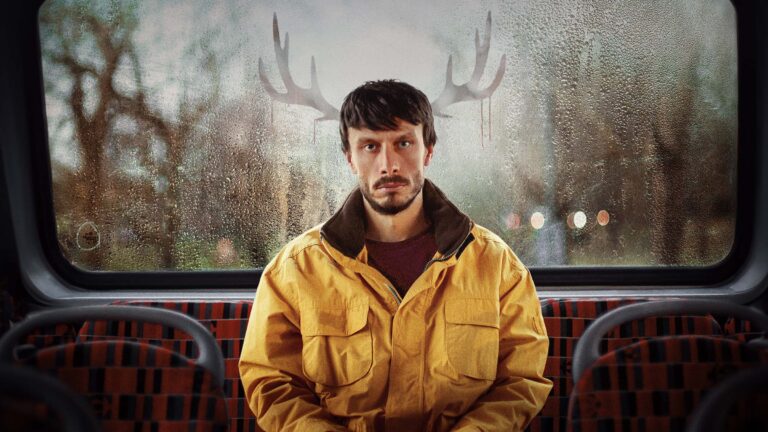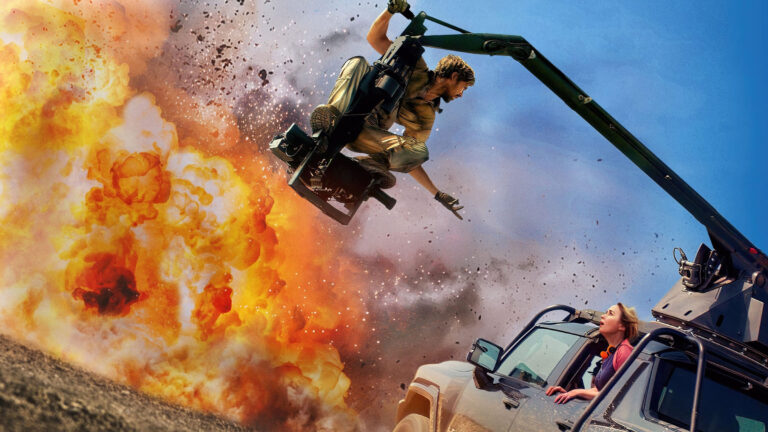Ahsoka editors Dana E. Glauberman, ACE, James D. Wilcox, ACE and Rosanne Tan, ACE worked together for the very first time to help bring to life the story of Anakin Skywalker’s former apprentice. Although none of the three describe themselves as experts on the Star Wars universe, it’s their gifts as storytellers that led Dave Filoni to trust them with his latest entry in the saga.
Set after the fall of the Empire, Ahsoka follows the former Jedi knight, Ahsoka Tano, as she investigates an emerging threat to a vulnerable galaxy.
In our discussion with the Ahsoka editors, we talk about:
- Cribbing Kurosawa’s Kagemusha
- Representing the audience in the cutting room
- Pressing pause on Pittsburgh in VFX meetings
- Dialing up Dune for the sound design
- Ahsoka Tano and The Shawshank Redemption
Listen while you read…
Editing Disney’s Ahsoka
Matt Feury: The first thing you see when you watch Ahsoka is something very familiar, but also very different. For the first time in the Star Wars TV series, we do see that familiar opening crawl from the feature films, but instead of being in yellow and crawling backward into space, it’s red and scrolls on a normal 2D plane.
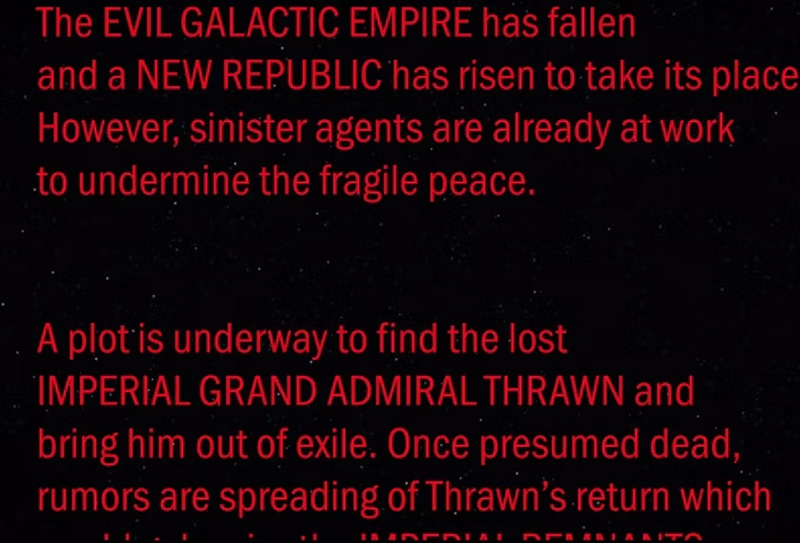
Dana, this is now your third Star Wars series, beginning with The Mandalorian and then The Book of Boba Fett. Dave Filoni was behind all of these. Did he say how he wanted Ahsoka to either be different or similar to the series that came before?
Dana Glauberman, ACE: Honestly, no. I don’t remember having any conversations with him about that specifically. The crawl is something interesting that Dave came up with in the cutting room. I’m sure he had it in his mind long before. He’s brilliant that way. We wanted that crawl to feel like the feature films. But I believe the traditional 3D crawl that flies away from the camera is saved for the features, so the 2D crawl from the bottom up is where we landed.

MF: By this point, you and Dave just have an understanding. You don’t have to talk.
Dana Glauberman: Exactly.
MF: Rosie, you are the only one with both Lucasfilm and Marvel experience. Even though they are both under the Disney banner, Lucasfilm and Marvel are very different studios. How would you compare and contrast the workflow of a Marvel series like Hawkeye versus Ahsoka?
Rosanne Tan, ACE: I can only speak to the projects I have worked on. For Ahsoka, we did a lot more prep on the Marvel side. The editors were brought on after the previs was done. We were brought on just right before production. I started Ahsoka in January, so it was about five months prior to production and we were doing a lot of prep work. We were part of the virtual storyboarding with the directors, Dave, Jon Favreau, and the DPs. That was a whole new experience for me. It was so much prep work. It was great to see how everything started on the script level. Then, we built every episode with our previs and we got to see them come alive in full sequences.
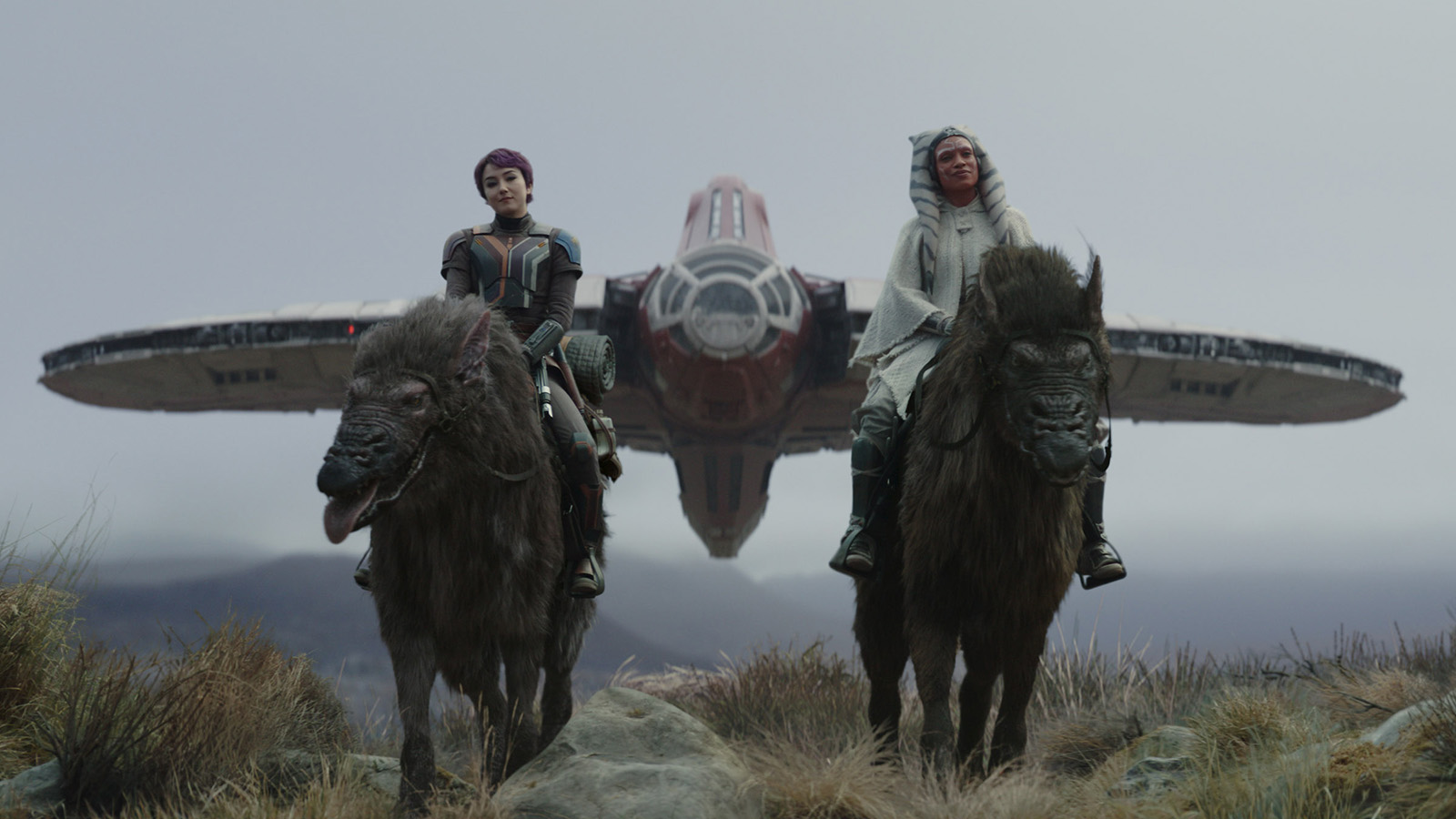
Marvel did previs but it was cut by somebody else and it was only for big action sequences. But on the Marvel side, we did a lot of postvis. After things were shot, we would send sequences out to The Third Floor. We worked with The Third Floor on Ahsoka too, for previs stuff. Those are different workflows and I quite enjoyed both of them. But the prep work was pretty great.
MF: James D. Wilcox, are you up for a little trivia game?
James D. Wilcox, ACE: I am, always.
Dana Glauberman: James always gets the fun questions.
MF: He does? Well, he’s the only one who can answer this, because it’s about him. Your first credit, believe it or not, is something called Science Fiction: A Journey Into the Unknown, which is ironic because you’ve barely cut any sci-fi or superhero stuff. You’re recognized for dramatic, largely dialogue-driven shows. Knowing that, tell me about getting this job and the things from your credits or your experience that you think might have played into why they wanted you for Ahsoka.
James D. Wilcox: That’s an interesting question. When I first started, I had no idea I would ever get the opportunity to work on Star Wars. That’s the dream for many editors. But that first science fiction show reality-based. It was a clip show that ultimately went to The Paley Center for Media (previously known as The Museum of Television & Radio).
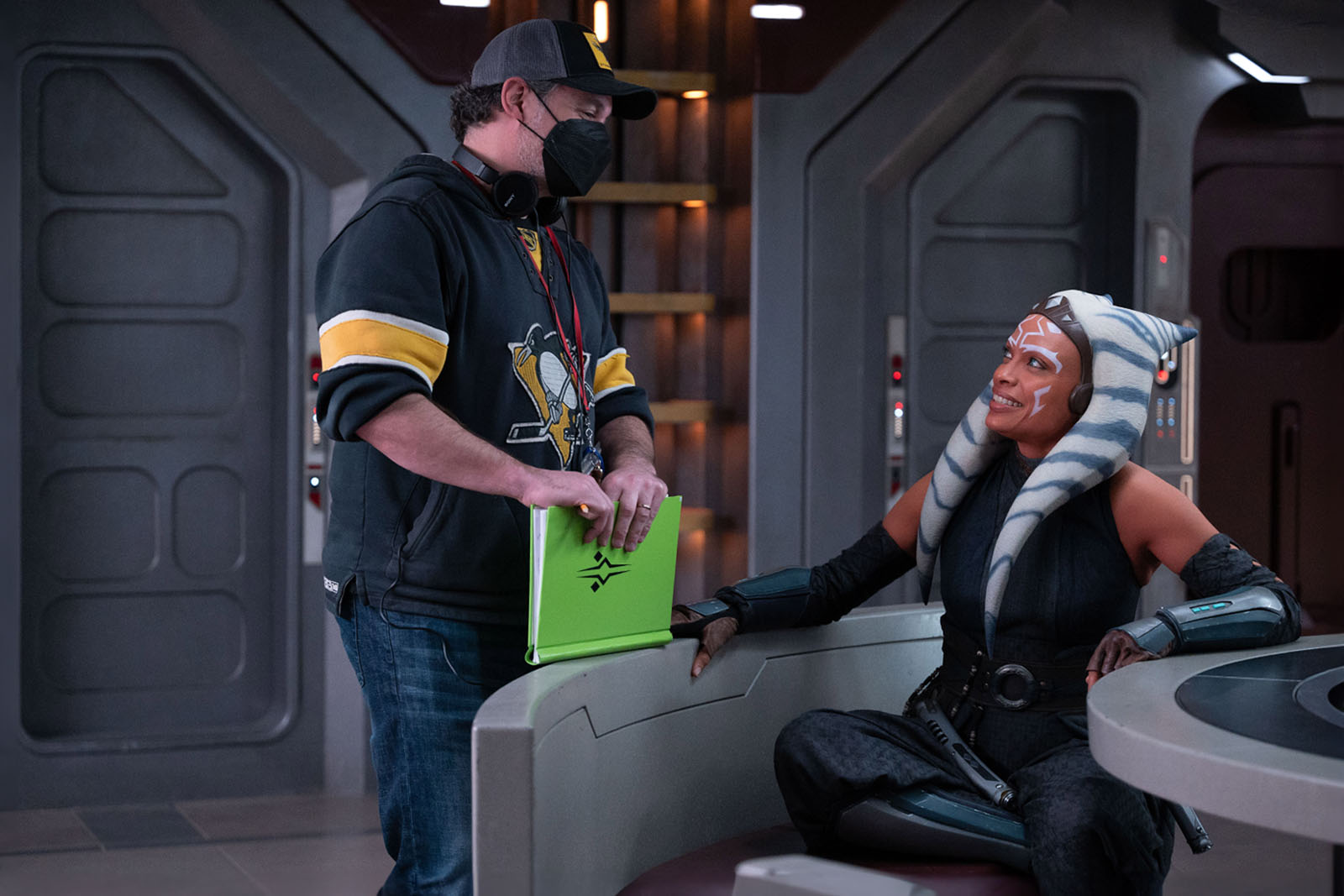
It was interesting. I’ve always had an interest in science fiction as a kid, but I hadn’t been able to sustain that interest in my career. I did a lot of other things along the way, always trying to grow and learn and do more in comedy and dramas and occasionally features. I have to tell you, Matt, on every show that I work on, I always find that experience pays itself forward.
I started in comedy after I did Journey Into the Unknown. Then I went into drama and all kinds of procedurals and projects that were more action-based. I was in London finishing up Thirteen Lives when I got a call that Lucasfilm had some interest in me from my agent at UTA. They wanted to talk to me about Star Wars and I said, “Let’s set that up right away because I’d love to work on it.”
Rosanne Tan: I have a little James Wilcox trivia. James, who did you see along the way that you worked with again on Ahsoka?
James D. Wilcox: Kevin Kiner. Kevin Kiner and I worked together almost a decade ago on Hawaii 5-0. I guess, in the different paths in our career, he went towards Star Wars Rebels and The Clone Wars. I had no idea that’s what he was doing. I went on and started doing more premium streaming shows and features, and then we came back together on this. It was lovely to work with him again and see the growth that he’s had in his career. Dave Filoni really relies on him. It was a pretty special experience.
MF: I bet it was. Dana, this is a relatively new crew to you. For the past two Star Wars series you had Dylan Firshein, Jeff Seibenick, and Andrew Eisen alongside you. Being the veteran of the crew, do you take it upon yourself to do anything in particular to help onboard your team? What do you do to help acclimate them to the workflow that you’re probably pretty used to by now?
Dana Glauberman: We had some early conversations. Rosie came on before James. When Rosie came on, we had a lot of conversations about the previs process. We talked about any questions that Rosie or James had, but we were still working from home, so we were distant from each other. A little bit too distant.
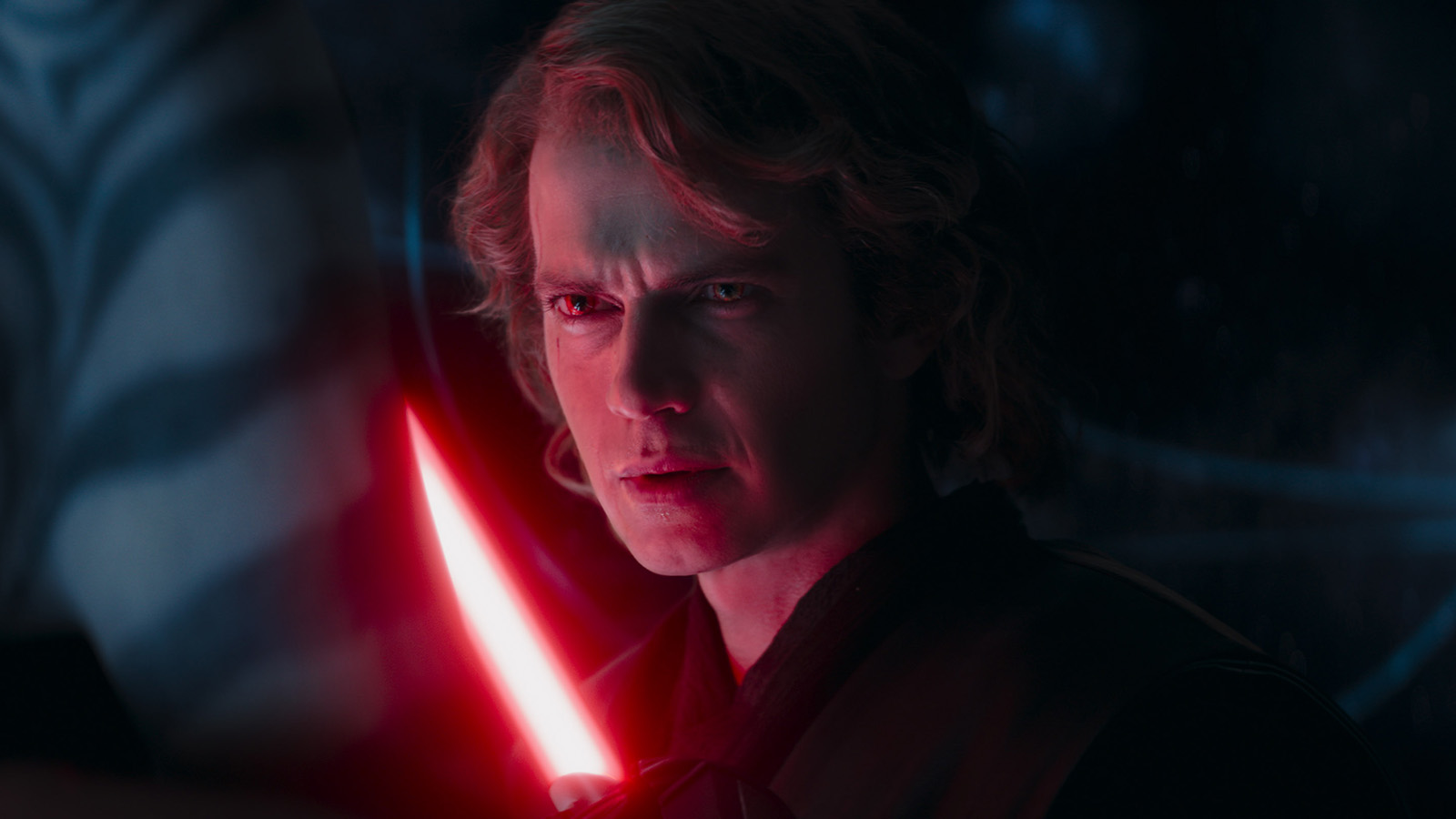
We had plenty of meetings and conversations along the way. I was able to help out anywhere that I could. I absolutely love working with Rosie and James. This show has been such a fun ride, constantly bouncing ideas off of each other and looking at each other’s work when we can. We didn’t have access to each other’s episodes, so it was a little bit more difficult in that respect.
James D. Wilcox: When you started, Rosie, I’m sure Dana gave you what she could at that point to help you get going. Then, when I started, Rosie gave me what she could to help me get going. It was quite a different experience. As Rosie talked about earlier, we had previs and the VFX meetings and the workflow of it all, and I had to get to know the names and faces and what the expectations were.
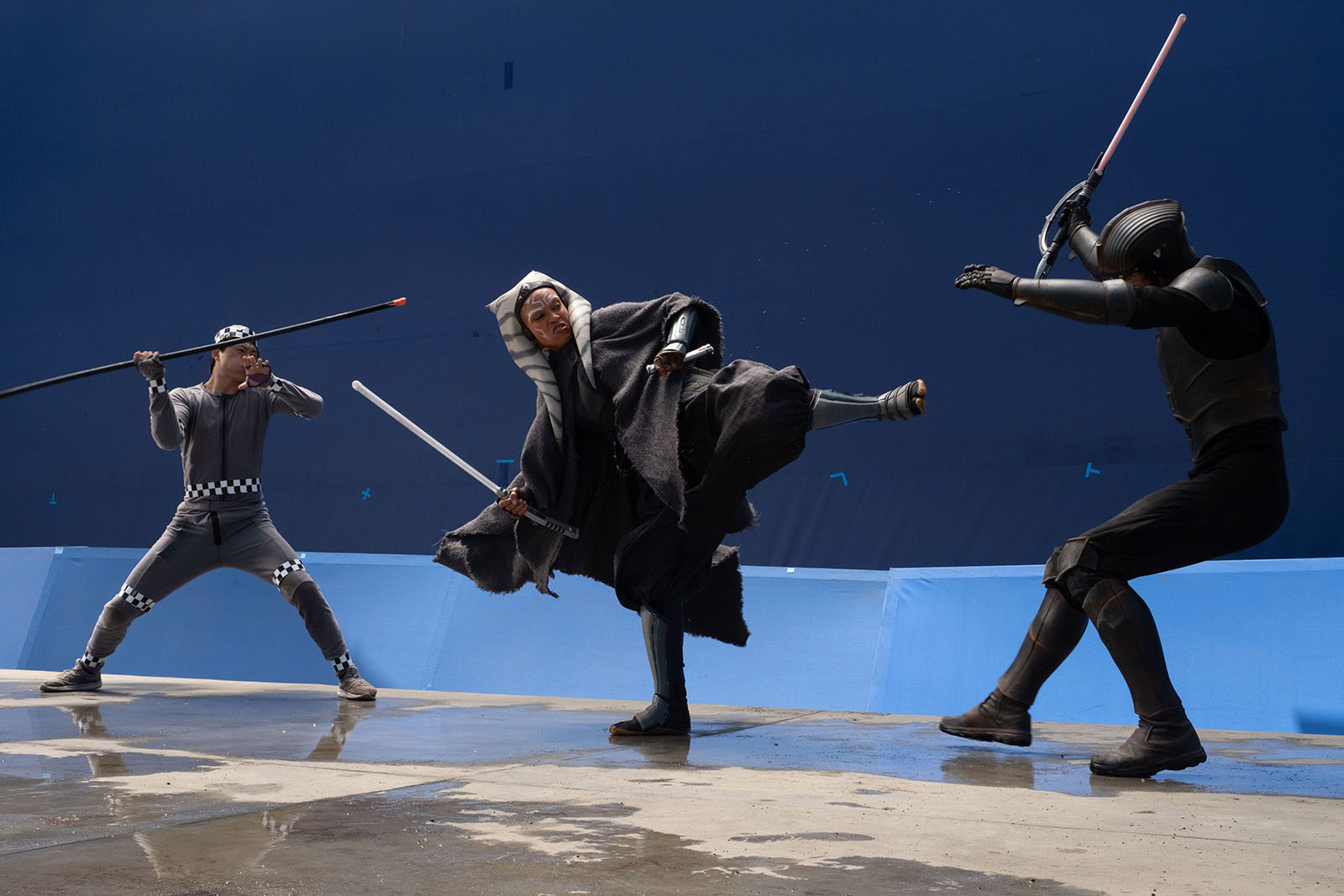
When I came in, these two were fully up to speed, so I would hear, “Oh, Richard Bluff will do this and this person will do that.” I didn’t know who everyone was because we never had a contact sheet that said, “This is this person, this is the supervisor for this.” You grow to learn it quickly. Rosie was able to help me get settled into my workflow. And for whatever Dana was able to pass on to Rosie, thank you. Rosie, thank you again for that.
Rosanne Tan: You’re welcome. In the beginning, we were all just on Zoom. It was all about getting the hang of things. When I first signed on, I had to talk to the assistants because we had to do a lot of radio cuts for the different episodes. Also, Dana, at the beginning it was the two of us helping each other out with the previs. The train had already started rolling, so we were just helping each other out.
Before James started, I was helping out on one of the episodes that he took on as the actual show. But I was helping with the previs. It took a lot of teamwork, a lot of communicating and helping each other out.
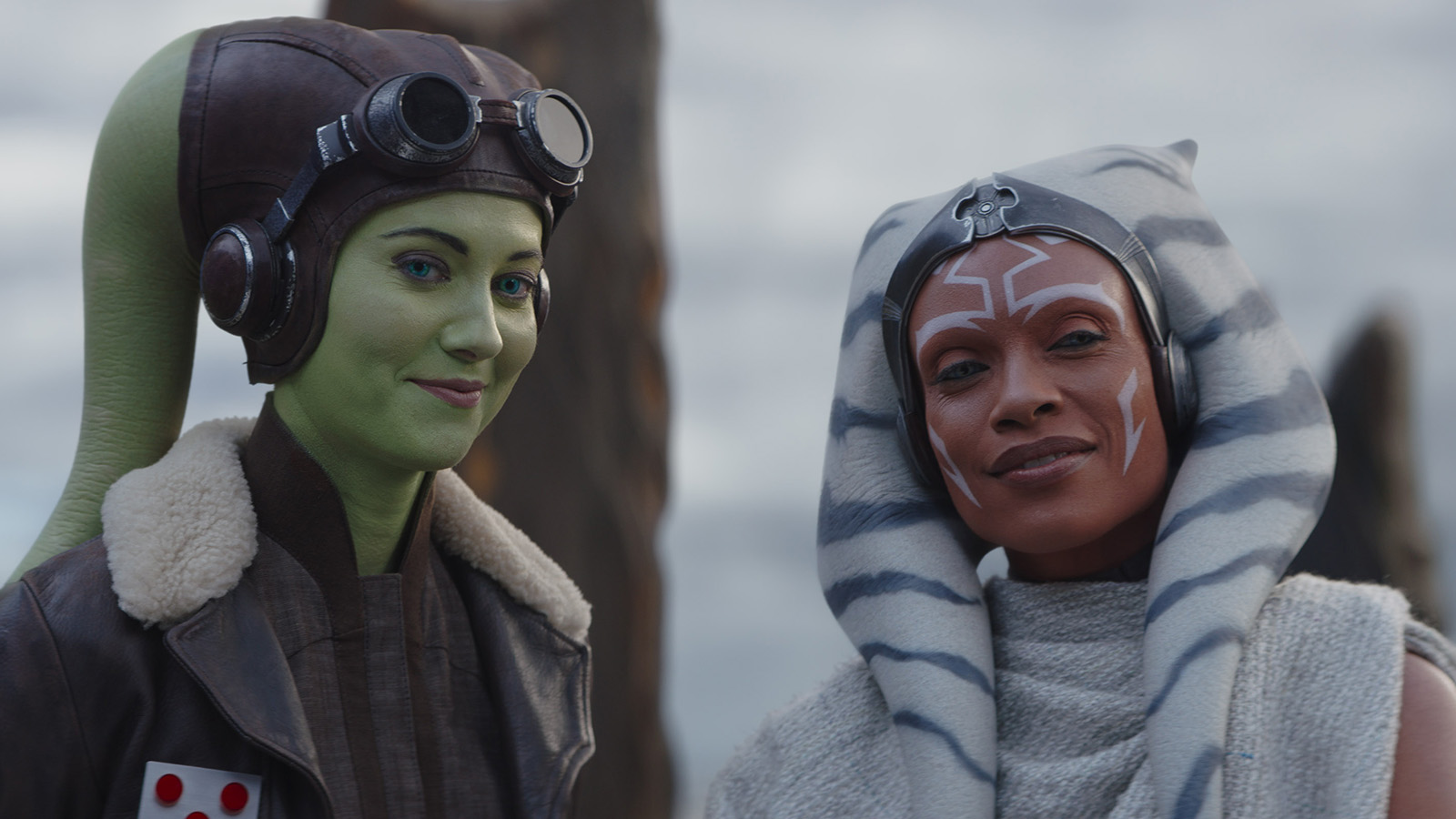
MF: On the other side of that coin, aside from Dana helping you both out, you helped yourselves out. This is work that’s built on Star Wars Rebels and The Clone Wars. Do all of you take it upon yourselves to go back and watch those series? Because it is such a deep, complex universe in terms of the characters and their backstories.
Rosanne Tan: I think the three of us can agree that we are not the most knowledgeable in the Star Wars universe.
Dana Glauberman: I second that.
Rosanne Tan: We’re storytellers, but as far as the Star Wars universe, I’ve watched the movies growing up and I would watch whatever new thing that would come out. I’ve watched The Mandalorian, which I liked. I can’t say that I know exactly what the background of every character is.
However, if we were on a call with Dave, he would give out things for us to research. For example, in episode five, he talked about Kagemusha or Akira Kurosawa and all his movies. I would do the research for that and watch those movies before starting episode five. But I wouldn’t know what a creature is called in this movie or that movie, or what planet. I’m still learning that stuff.

Dana Glauberman: I am too!
Rosanne Tan: But we would know whatever was important for our show.
Dana Glauberman: As you said, Rosie, we are storytellers, so I think there are different challenges along the way with anything that we work on. Whether or not we are fans of certain characters or certain movies or franchises, we’re still hired to tell a good story. I think we’re all storytellers in our own right and we can bring that to the table.
Whether or not we are fans of certain characters or certain movies… we’re still hired to tell a good story.
James D. Wilcox: When I was in London, I got a bit of a cheat code from Jude Babcock about which episodes of Clone Wars and Star Wars Rebels were going to be critical to watch. My son had been following the series as well so when I had questions about it, I would ask him. I would work my six days a week on Thirteen Lives and come home on the weekends and cram as much as I could.
When I was interviewed, I was very candid. I’m sure Rosie and Dana were too. Dana, they were already familiar with you as a storyteller, but this was my first dip into Lucasfilm. I was very clear about, “What I can offer you on balance is the storytelling.” I went to Ron Howard, who had done Solo, and I said, “Ron, I think I’m going to take this job. I’m a little concerned that I may not know as much as I need to.” Ron goes, “Don’t worry about it. They don’t expect you to have an encyclopedic knowledge of the entire Star Wars catalog. What they want for you are your instincts, your storytelling ability.”
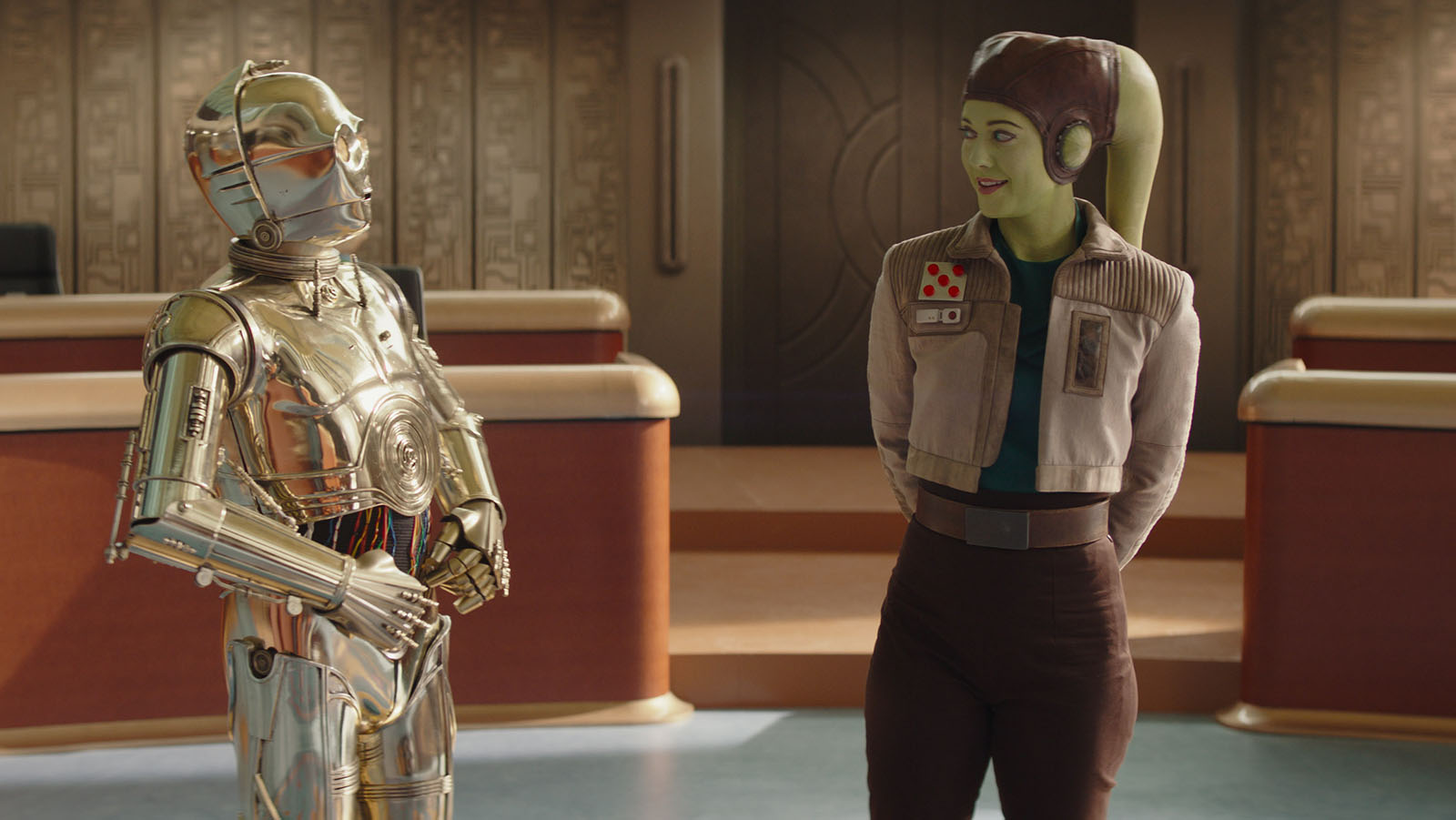
On balance, it works well. We are not beholden to anything that’s going on. It has to make sense to us first. We represent a certain amount of the audience who may not have seen all the previous episodes of Clone Wars or Rebels. In that perspective, we have newcomers come on board and understand the fundamentals of the drama that we’re trying to tell. And Dave Filoni trusted us all with his characters.
MF: I’ve done interviews on The Mandalorian, The Book of Boba Fett, and Obi-Wan. It didn’t occur to me until now that you only ever have one set. You’re in the Volume or in the Stagecraft virtual set.
I had assumed that you couldn’t work on more than one episode at a time. But there was a recent interview with Rosario Dawson where she said, “We filmed in tandem the whole time. It was a six-month shoot and it probably would have been a year had we not had two different crews filming multiple different episodes at the same time.” So you do have two crews working together, somehow, with that one set. How does that work and how does that affect you as editors?
Rosanne Tan: It’s a lot of planning. I think that’s why there’s so much prep involved before shooting. Get all the episodes down, get the previs laid out, and then they’re able to play. For example, during production, we were upstairs and we could come down whenever they needed us. They had tandem sets going and I think that’s great because I would be getting dailies on one day, Dana and James would be getting dailies on a different day, and we were just focused on our episodes. We were getting things done to our different deadlines.
Dana Glauberman: Along those lines, I just want to stress the fact that we were essentially cutting these episodes three times. Each episode is cut three times. The previs is cut and they’re planning the backgrounds because a lot of preparation and planning goes into what goes up on the Volume wall. We have to cut previs and then we cut during production and then we’re working with the directors and producers and Dave, so we’re cutting each episode at least three times facilitate all.
We were essentially cutting these episodes three times.
James D. Wilcox: I would say there’s even a fourth pass that we do before we even get to previs. We have table reads that come in from the cast. We have to do that radio cut so you can get a sense of the rhythm and the dynamics of what’s going on with the actors and the characters. Then we’re able to give that over to previs so they have something to work towards. Otherwise, they’re kind of guessing at what they’re doing. If you add that pass, it’s like a fourth pass.
MF: How do you feel about talking about some scenes from the series? You have to say yes.
James D. Wilcox: You can see that we’re all trained very well by Lucasfilm not to overstep our boundaries.
MF: You know, a staple of many Star Wars films and shows are the lightsaber duels, but not all duels are created equally. Dana, I’d like to compare and contrast the duels that you did. In episode one, you have Sabine Wren (played by Natasha Liu Bordizzo) and Shin Hati (played by Ivanna Sakhno), two less-experienced lightsaber fighters.

It seems like the way you cut it was looser with more wides and you could feel that they were less-experienced fighters as opposed to a duel you did between Ahsoka and Baylan Skoll (Ray Stevenson). Faster cuts, more angles. Your cuts help make the fight look more real, and more dangerous to cover up any doubles that came in to do stunts.
Tell me about those two different approaches. Sabine and Shin are not Jedi Masters. They’re just starting out. Did you take a different approach to how you did for Ahsoka and Baylan?

Dana Glauberman: Episode one was directed by Dave Filoni. Episode four, which has the Ahsoka and Baylan fight, was directed by Peter Ramsay. The coverage that I had was drastically different as well. Both were shot by Eric Steelberg, but the angles that I had to work with were very different from each other. I take what’s given to me and go off of that. The choreography of everything was spot-on spectacular and all the actors and stunt doubles trained like crazy to give us what we need.
All the actors and stunt doubles trained like crazy to give us what we need.
I’ll answer the Ahsoka-versus-Baylan first. It’s so sad to remember that Ray Stevenson is not here with us anymore. Baylan is such a force of nature and his choreography was much more powerful and the coverage that I had showed all of that. But the Shin-versus-Sabine lightsaber fight at the end of episode one was a little bit less so. A lot of it was planned during the previs stage, so I followed along with that.
However, I was able to throw in a couple of different angles. Working with Dave, my first cut was probably a lot different than how it ended up because they were much slower in their performances. We had to speed things up a little bit through little tricks of the trade. We used visual effects, we cut out frames or whatnot. But they gave me what I needed to put what we have on screen.
MF: Besides the lightsaber duels, as far as set pieces go, Star Wars also has its dogfights in space. But now and then it has a great chase sequence. You have the speeder bikes and The Empire Strikes Back, or Anakin’s pod race in The Phantom Menace.
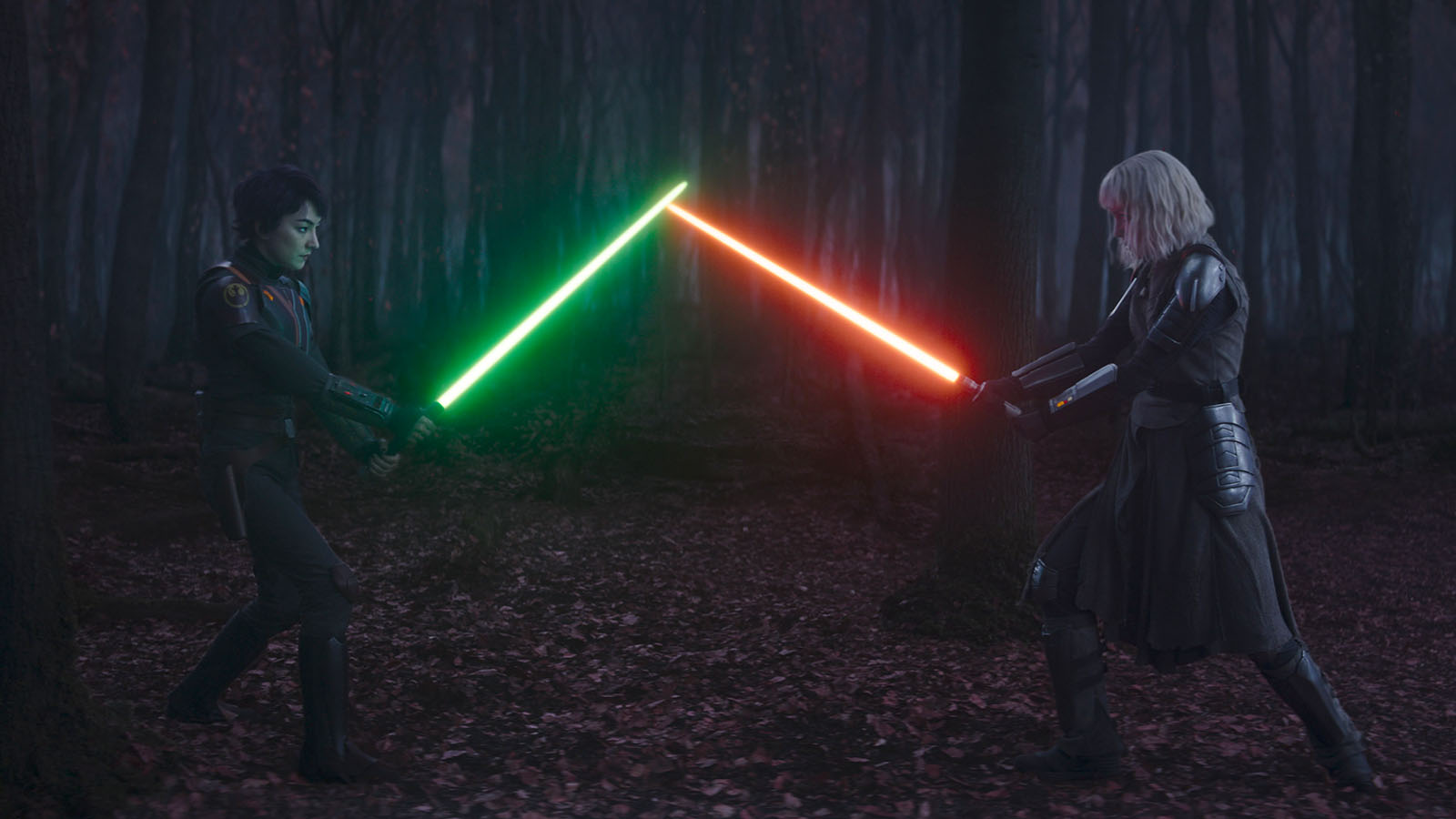
Rosie, you get to have a lot of fun in episode seven with a sequence where Ezra Bridger (played by Eman Esfandi) and Sabine are running with the Noti. They’re these walking turtles that sound like Jawas and act like Ewoks.
The Noti, Ezra, and Sabine are being chased by bandits. Like any chase, you have beats within it. There are bits of comedic or expository dialogue or an insert of a specific bit of action between characters. How do you go about building that sequence? Do you start with those beats that I mentioned and then fill in the wide shots, or do you take a more linear approach from the beginning to the end?
Rosanne Tan: You think about what the cause and effect is. Dave is always talking about cause and effect. We had the shots in previs, so we were trying to work out, “This band is chasing after them. Are they going to shoot at the Noti? Who’s going to shoot first?” We planned it out that way.
A lot of times, when the dailies came in, it was just the pod and the blue screen. We would split-screen it and do the sound design and tell the story that way, just to see how everything was laid out. Then, we’d insert the moments where Ezra and Sabine had their line or two, again, focused on the cause and effect.
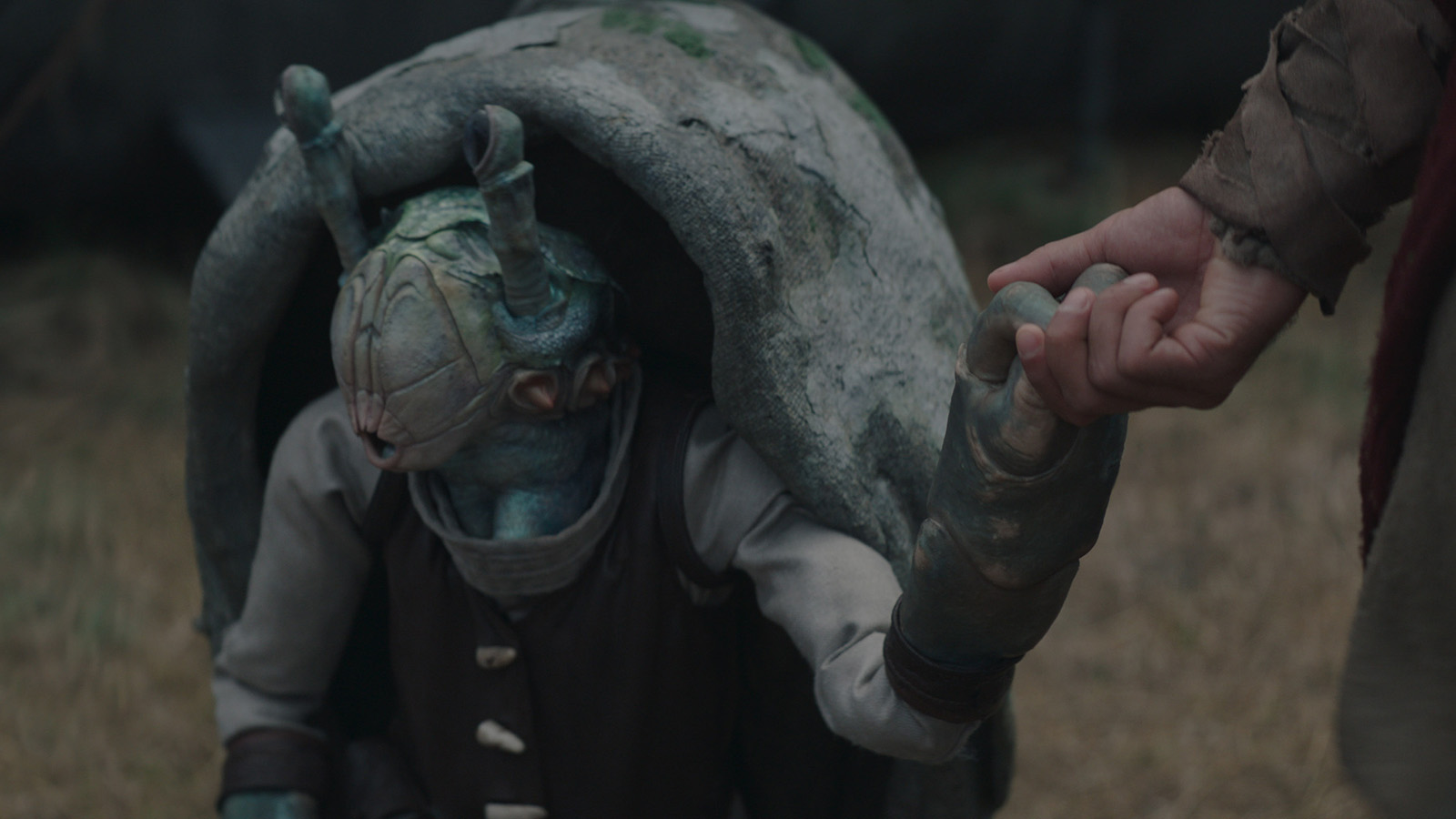
Between that, before we get any shots from VFX or the vendors, we lay in the stuff from the previs. That’s why the previs stuff for big chases is so important to have. I can’t create a turtle sitting on a pod. We need those shots and we need to put that in. We’re also temping sound design and music and then showing passes to the director and Dave. That’s usually how sequences like that work.
MF: Dana mentioned how powerful Baylan’s character is, and it’s true. There’s a lot of conflict with that character. When the Great Mothers imprison Sabine in episode 6, she protests to Baylan, “Hey, we had a deal” and his reaction shot shows that he has regrets about reneging on that deal. In the next scene, Baylan and Shin have an extended discussion about his past and his experience with the Jedi being raised at the temple. Every character has their motivations to reveal, but his character seems to be a lot more than that. Can you tell me about managing how you manage to give the audience too much or too little with this character because he is so mysterious?
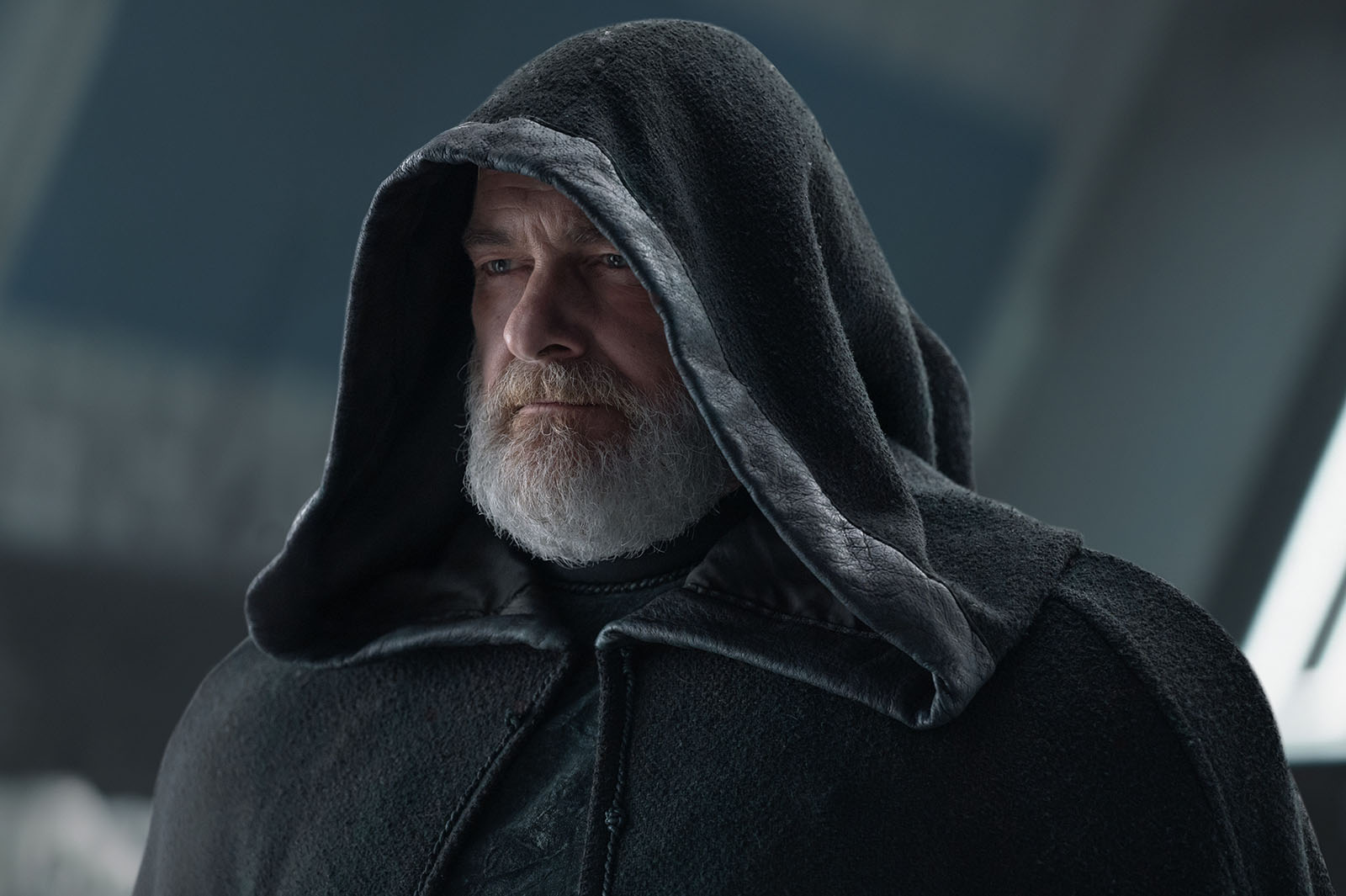
James D. Wilcox: Ray made excellent choices. I’ll just start there. In the dailies that I got, there was an emotional complexity to what he did with Baylan that I never expected. Sometimes when you’re cutting stories that have villains and heroes, they can be very one-sided and it’s very clear that the villain does this, the hero does that, he wrote.
With Baylan, there was complexity and integrity, an internal struggle that almost felt like a religious quest. He was struggling internally with what his mission was in life, his greater calling, how to find that, and how to get there. I think it was something that was so emotional that he could never quite explain that to Shin in a way that she would believe it. He knew what he was after and she just had to trust him. I think the focal point of that trust became, “Are you going to honor what you told Sabine?”
Sometimes when you’re cutting stories that have villains and heroes, they can be very one-sided.
We as the audience never knew what he was going to do, which made his character so fantastic. There was never a predictability to his journey and what he intended to do and what his means to an end was. You got the sense that every one of those characters had their own agenda by the time they hit Peridia. I think that uncertainty is really what made those characters much more complex and interesting.
MF: I want to follow up on working with Dave Filoni as a director. I believe just Dana and Rosie were able to work with him as a director, so I guess this question is for you. Does having him be the writer and director make the whole process more efficient? He is kind of the wellspring that all this stuff comes from.

Rosanne Tan: First of all, he created Ahsoka with George Lucas, so he knows exactly what their agendas are and where everything is and how everything is laid out. He’s also an encyclopedia of Star Wars. I think he knows what he wants. Of course, when we’re working with him, we try different things, but he’s the person that’s ultimately going to decide how it’s going to be.
Dana Glauberman: That’s exactly what I was gonna say. He is an encyclopedia of Star Wars. It was like I was in Star Wars school with him. You get little bits of information every single day. He wrote all eight episodes of Ahsoka and he knew exactly what he wanted. It’s a true collaboration between us and him and everybody else involved, and that’s part of the reason why I absolutely love working with him. He’s fun. He gives us a hard time, he jokes around, but he also has a clear vision of what he wants the show to be.
If we saw it differently, there was never an objection to us being able to present another version.
James D. Wilcox: Dave is clear, but he’s not closed. He let us take some bold swings on some alternate cuts for the story as we understood it, for people who are trying to relate to this material, who aren’t hardcore fans. You want to hit all levels of fandom and introduce new people to the series. Dramatically, he would allow us to do things, whether they were small trims or scene deletions, or what have you. If we saw it differently, there was never an objection to us being able to present another version.
Dana Glauberman: One hundred percent.
James D. Wilcox: His balance of collaboration is wonderful. He’s a good leader, but he’s also a great listener. He listened to what we felt as storytellers. He listened to where we wanted to take a scene or how a beat could go. You’d have to voice it early enough because, obviously, these shots are all designed. There are a lot of visual effects involved. If you had an idea then you needed to speak it early, while there was still time to consider that idea and have it move forward with the visual effects department.

Rosanne Tan: Episode five’s title is “Shadow Warrior”, which stands for Kagemusha. It’s Akira Kurosawa’s work. That was Dave’s inspiration. I remember getting that episode. I was nervous because there were a lot of dream sequences.
Dana Glauberman: No pressure.
Rosanne Tan: Yeah, no pressure! I knew it was going to be Dave directing, so I did a lot of research. I downloaded temp music. Before we even got to Kevin Kiner, we did a lot of temp music and sound design and everything just to present our cuts. It was a lot of pressure and I wanted to do a good job.
I watched everything by Akira Kurosawa, just to see where the inspiration would come from and just try different things. I know it’s not cutty. It’s about trying different angles and seeing how samurais would be. It was really scary at first, but it was so much fun once I was able to present it to him. I saw that he liked it. I thought, “Okay, great!”
Dana Glauberman: You can work another day.
Rosanne Tan: Yeah, I can work another day. But it’s always like that whenever we present something. We put so much time and work into it. We just want it to be good. It’s always nerve-wracking at first.
We put so much time and work into it. We just want it to be good.
Dana Glauberman: Showing a first cut is never fun.
MF: The visuals often get the attention when it comes to Star Wars, but I think the signature of the franchise is the sound. James, you got to do a lot of fun sound design stuff in episode six. You’re building on the work that the godfather, Ben Burtt, did. But you’re also creating a new language and adding to that and making new sounds. Things like the Great Mothers’ voices, Captain Enoch and the Night Troopers’ voices. The Bandits of Peridea had an almost Tusken Raider sound. For the sound design, are you drawing from the Ben Burtt library and modifying it? Or are you creating things out of whole cloth? How does that work?
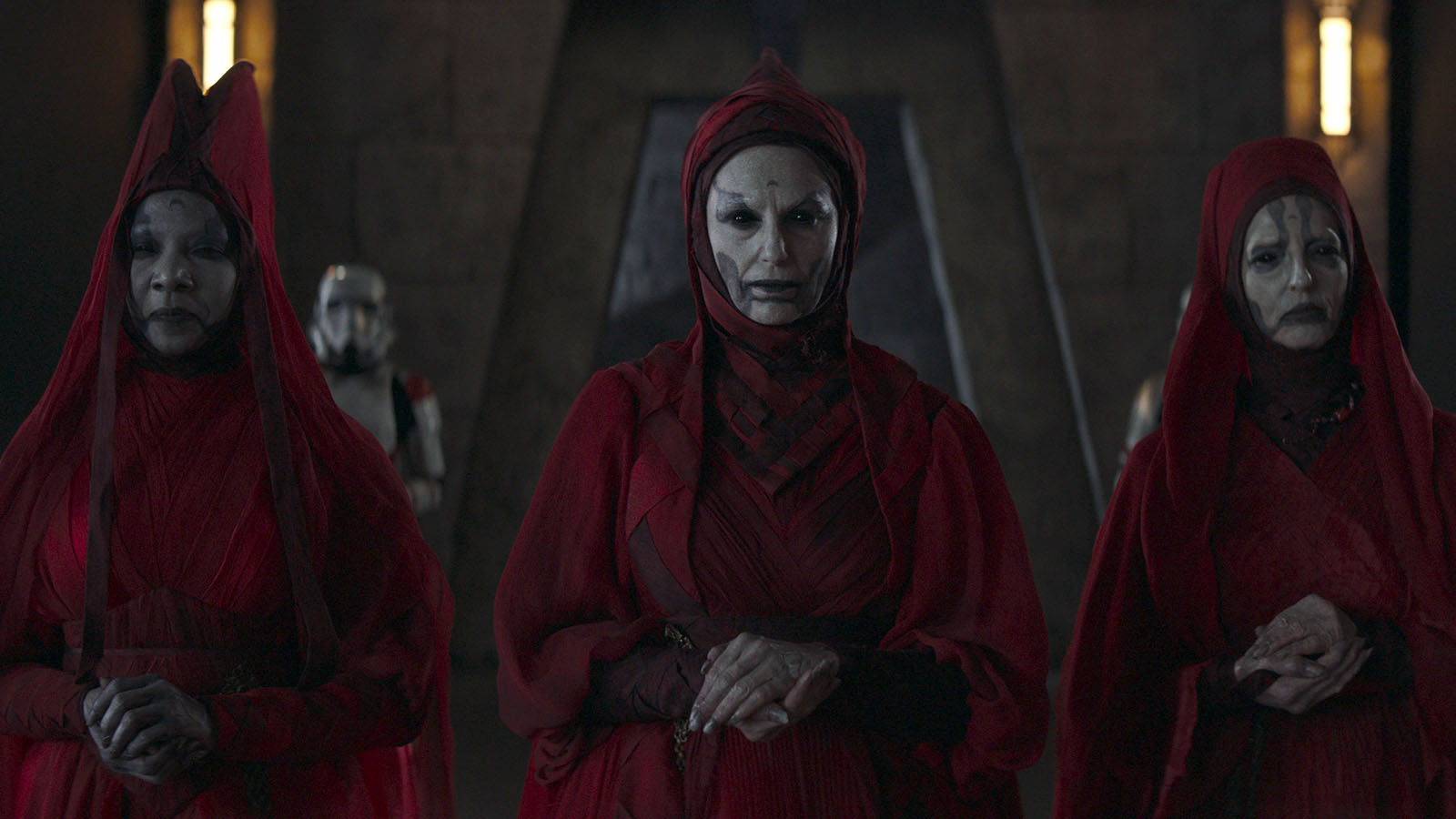
James D. Wilcox: It’s a combination of what can use from the library and what’s new. We don’t want it to feel too similar to what’s been used in the library. It’s a brand new series, it’s live-action Ahsoka. You want it to have its opportunity to come to life. It needs its unique signature and sound.
The Nightsisters, for example, spoke in unison with this whispery, floaty kind of affect. I didn’t remember that as much when I watched Star Wars Rebels and Clone Wars, but I had watched Dune recently. The Bene Gesserit had a similar fashion of speaking. I thought, “You’re never going to get that right until you get Skywalker Sound to take over.”
We went through multiple versions of what Captain Enoch would sound like. We had Wes Chatham come in and do his thing and then I sent it off to Matt Wood. He gave us back five or six examples of what Enoch could sound like. I cut them all in on different tracks and presented them to Dave.
Dave said, “We can get rid of two, we’ll keep three and five.” We went forward and near the final mix, we just chose one. Mostly, that was Dave’s decision. I felt like if we could get it down to two or three choices, those two or three choices are solid. But it’s his preference as to what it’s going to sound like. That’s going to be the foundation going forward.

Episode six was a reintroduction in many ways. It was almost a second pilot episode in the middle of the series. You are world-building. You’re introducing the Noti and you’re introducing Howlers and Grand Admiral Thrawn’s appearance. There were lots of opportunities to reset and introduce the planet and all the things that were new and unique to Star Wars, just to freshen it up.
Finding and discovering those voices was a lot of fun. We drew some sounds from the Tusken Raiders. Dave actually said, “Let’s make the Bandits sound somewhat like Tusken Raiders.” That was good enough to get us through his cut. We forwarded that over to Matt Wood and then we could nail what those characters sounded like in the final mix.
Rosanne Tan: The sound design part is a lot of fun when we get to do it on our side. But then to see what Skywalker Sound does is amazing. Kudos to Bonnie Wild, Matt Wood, and David Acord and their team for making amazing sound. These guys have a relationship with Dave Filoni. They’ve worked together on previous Star Wars projects, so they know exactly what to suggest or pull from. To see their work come alive is pretty incredible. You get the chills. You know there are things that you can probably pull from, but it’s always going to sound better once Sky Sound takes their pass.
MF: Dana, by this point you would think I’ve asked you every question I could about Star Wars, but I don’t think I’ve asked you this one. I believe Dave Filoni got to voice Chopper the droid. Are any of your voices in this series?
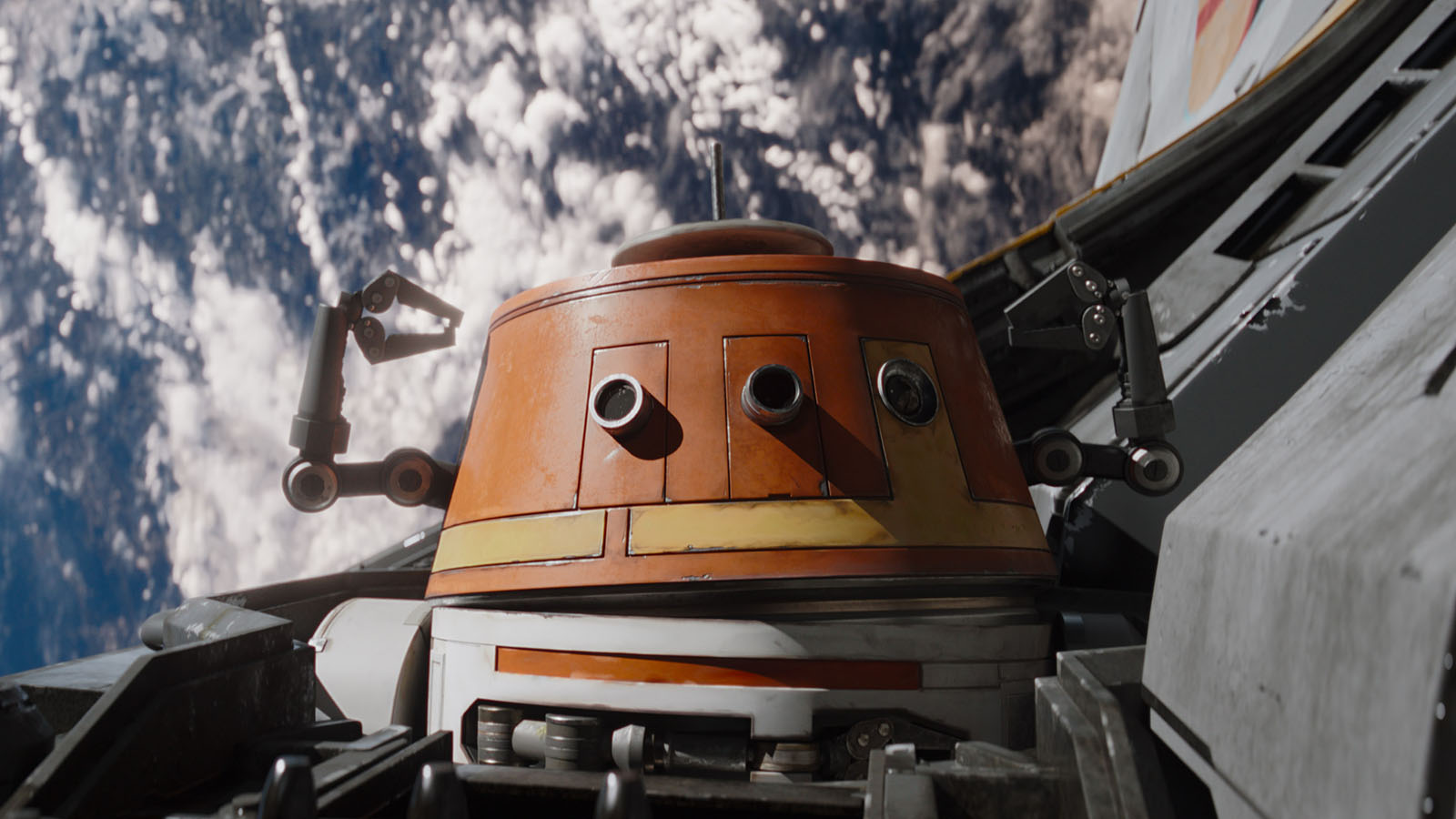
Dana Glauberman: My voice has not been used in any of the Star Wars projects. It has been used in a couple of the other movies that I’ve worked on, but so far not yet. Hopefully sometime soon.
James D. Wilcox: I snuck in a temp voice that Dave asked me to do. He hated it later on and gave me grief over it. It was the Tusken Raider scene when Sabine is fighting the Bandits of Peridea. There were a few lines that he had written and they were just guttural utterances of things. One-word responses.
I cut it and processed it, trying not to have it sound like my very distinct voice. Then he heard it and he goes, “Back up for a second” and I think, “Okay. Here it is. It’s coming. How heavy is it? How is the dump truck gonna be?” He just gave me such grief over it. Eventually, I just took it out. I thought, “Okay, Matt Wood and Bonnie and those guys will take care of it. I’m going to remove myself from the process.”
Dave loved giving us a lot of grief once he really got comfortable with us. It was a lot of fun working with him, really, a lot of fun. The fact that he and I are both from Pittsburgh, made us instant, fast friends and colleagues.
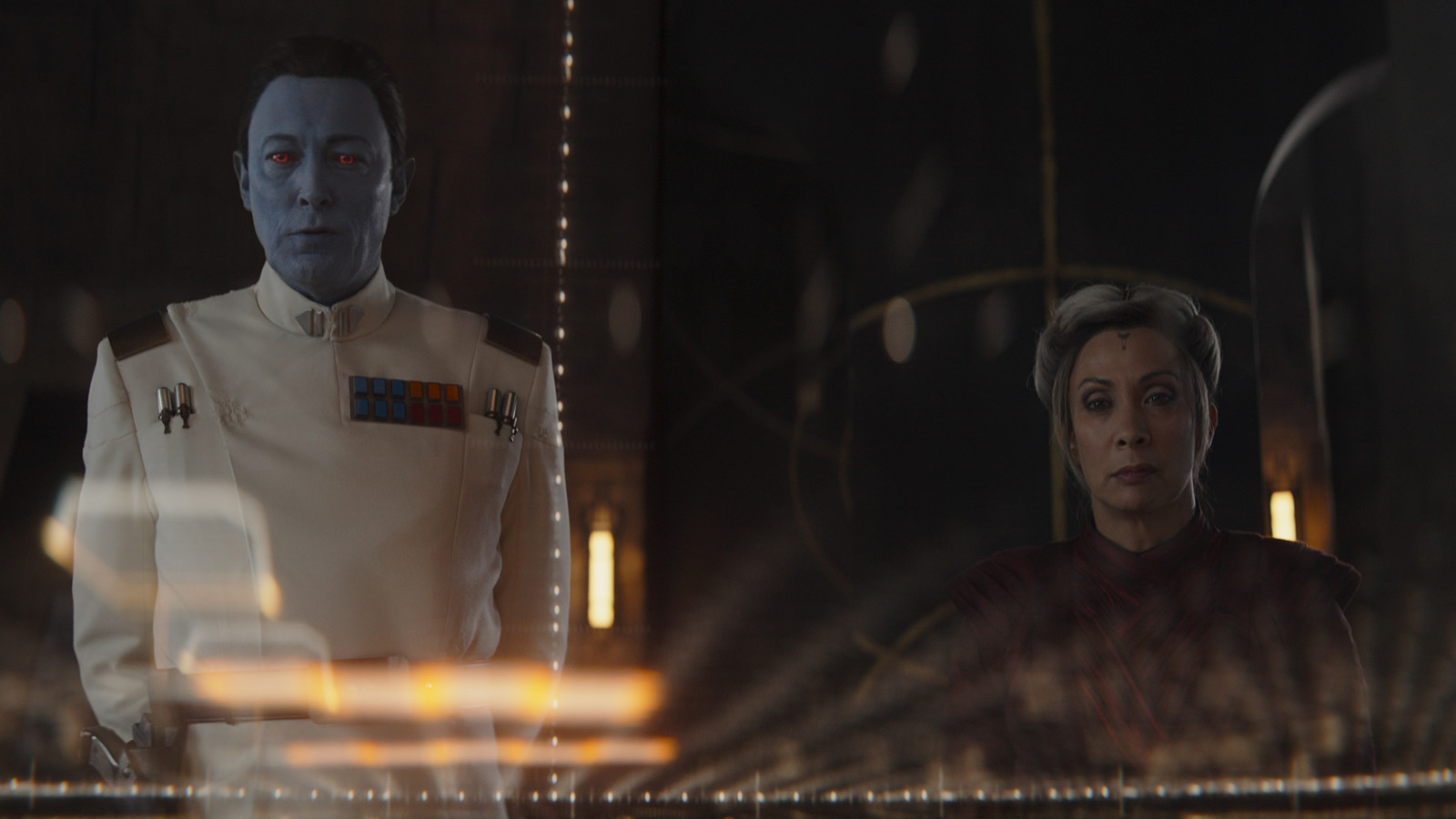
Dana Glauberman: Didn’t you have to stop wearing your Pittsburgh sweatshirts at some point?
James D. Wilcox: Yeah, because our VFX meetings would get derailed. We would talk about these things that are very local to Pittsburgh and you could see everyone else on the Zoom just kind of fading away. I would just stop talking because no one’s going to tell Dave, “Let’s move on” but they’re giving me the stink eye. They said, “You should stop talking about Pittsburgh. Then he will stop talking about Pittsburgh and we can have our meeting.”
Rosanne Tan: Going back to the voice thing, it’s been removed for the final product, but I didn’t want to hear myself when we were doing the temp cuts. I’m just not a fan of my voice.
Dana Glauberman: Same.
Rosanne Tan: But we did voice a lot of the Noti in temp. For example, my assistant editor Caroline Wang was a Noti. Dana’s assistant editor John Rocke was a Noti. I think everybody helped out. We were pretty good about the weird Noti sounds. I’m just glad we took it all out because Matt Wood and everybody put the proper sounds in for how a Noti would be. But for temp, I heard myself and said, “I’m okay with being a Noti throwing a rock for now.”
Dana Glauberman: For now, not permanent.
Rosanne Tan: No. I didn’t want to say anything because Dave would probably give me grief and say, “Take it out” or something.
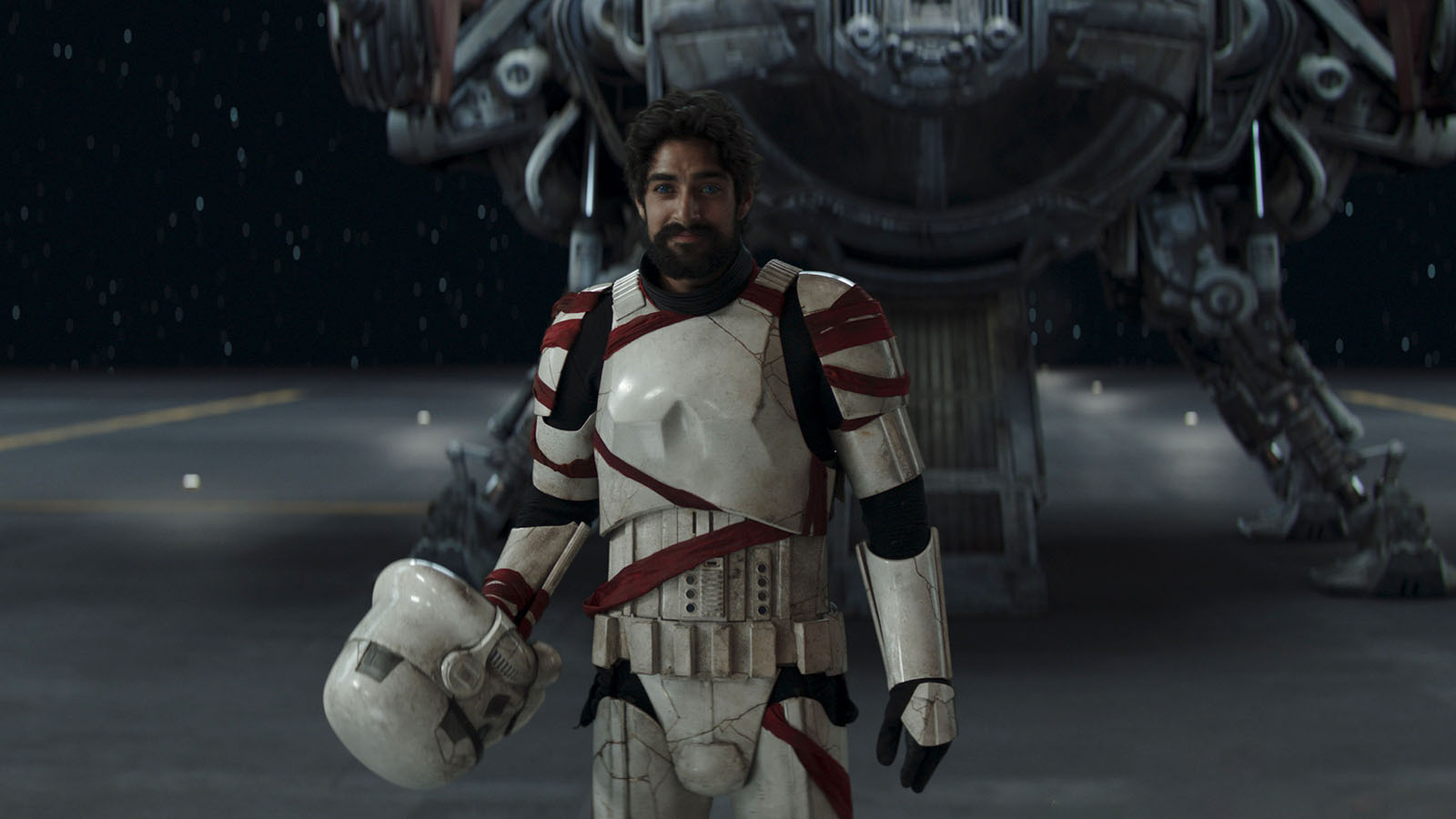
James D. Wilcox: Rosie, you did give me a temp once of one of the witches.
Rosanne Tan: Oh yeah.
Dana Glauberman: You did?
Rosanne Tan: I did.
MF: James, could you send that over?
James D. Wilcox: Rosie gave me a temp one time for one of the witches and we were able to cut that in. Because we’re hypersensitive to our own voices, oftentimes we would ask people around the office to do it. Some of the standings would give us ADR too. It would work quite well. Occasionally, you get one that they had no context for and you just go, “Okay, how do I tell this person who’s being very helpful that that’s not the help we need?”
Dana Glauberman: There was plenty of that going on.
Rosanne Tan: I remember that so well.
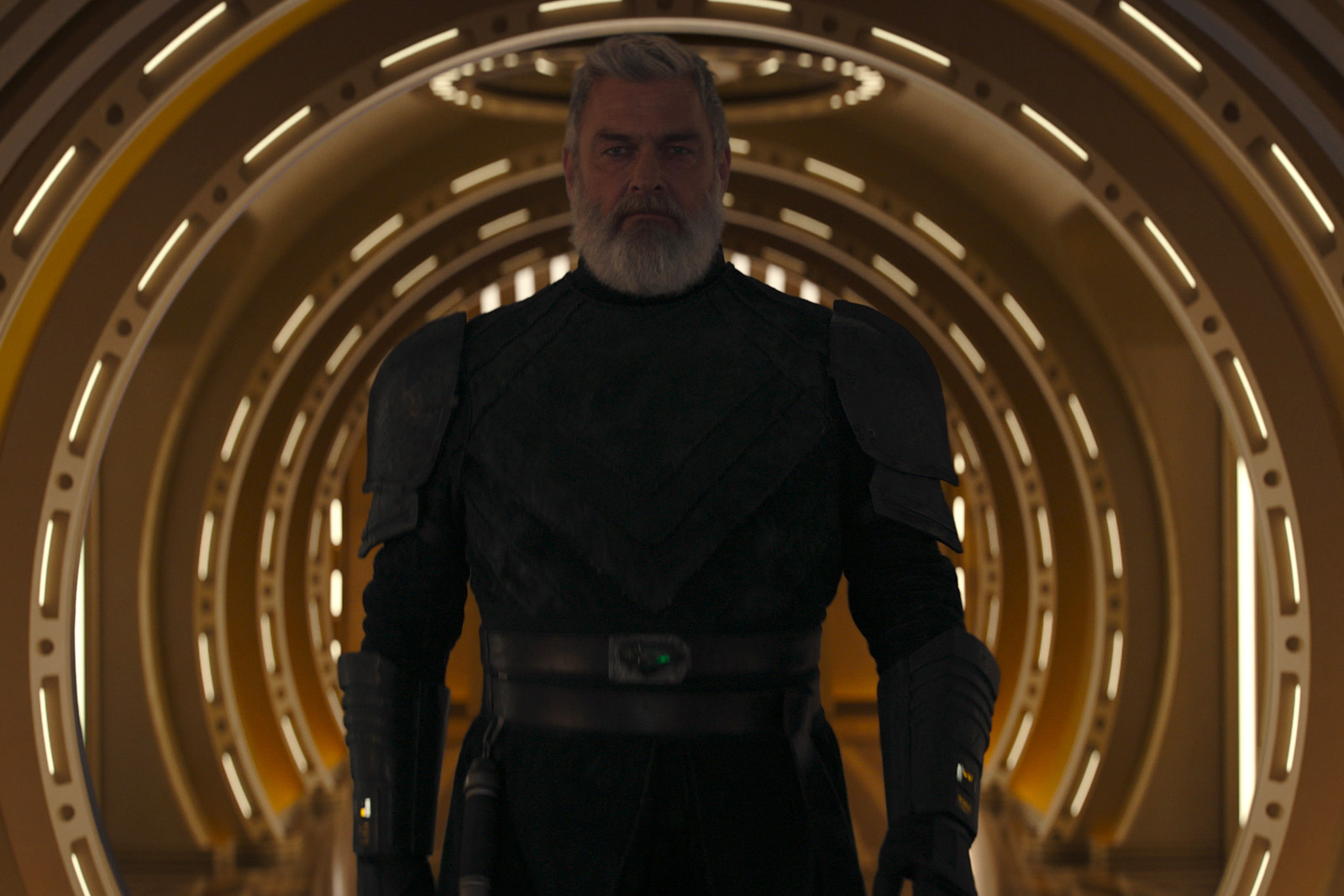
MF: While we’re still talking about sound design, I don’t think I counted a single Wilhelm scream. Am I slipping and I missed one? Or did you decide to give Wilhelm a break for once?
Dana Glauberman: I don’t like to use that. In episode four, we may have taken it out for the final, but it was in there for a long time. There’s one when Sabine and Ahsoka come running down into the field to fight with the guard. Ahsoka uses the Force to pull a guard over and then pull him back. I’m pretty sure we had a Wilhelm scream in that. I don’t think we kept it in for the final, but it was there. It was carried over for a long time.
Rosanne Tan: I don’t like to use it. My assistant Caroline knows how much I care about the sound. I would just have her do her temp ADR. We would do a lot of grunts and screams. We would rope John Rocke in. He is really great at temp voices. I think he temped a lot of stuff for us. Same with James. Agustin Rexach would help out too. We were a team. Everybody was helping out where we needed it. It’s fun to record screams in your house and put it in the background.
It’s fun to record screams in your house and put it in the background.
Dana Glauberman: Everybody works a little bit differently. I rely on my assistants to do all the sound work because I want to focus on the story and performances. Not that other editors don’t. They do a great job with that too. But I put all of my time into that and I keep my assistants involved. Sometimes I throw them a bone and allow them to cut.
John Ott was fantastic. He was a huge help because he knows Star Wars. He was my assistant on this, but I also gave him a lot because I was focusing on the pilot with Dave. I was falling a little behind on episode four, so he ended up cutting a lot, and he got an additional editing credit for that episode, which was great. I rely on my assistance to do all the sound work. I do tweaks here and there, but early first-pass sound work, I give it to them.
Rosanne Tan: We just had a great crew all around. From Caroline to John to Agustin and also our VFX editors. There’s Richard Sanchez, Steve Jacks, and Michael Struk. Every time that we needed all hands on deck, everybody was ready to jump on board. That’s the great thing. Even on the other side, we don’t really deal with the VFX team side. There are so many assistants on that side. So many people. This project is so big and we had a great team all around.
MF: The thing with the Wilhelm scream is, it’s kind of playful. Ahsoka is a little darker, compared to a show like The Mandalorian. But there is a scene that I felt was an outlier, in a good way. When you introduce Sabine, the music is a little playful and the scene is a little jokey. It’s a little awkward. Then you have a rock track playing when she is outrunning the space cops. It’s a very different scene tonally than the rest of the series. I just wanted to know, Dana, were you thinking, “How far can I go to make this a little broader, a little funnier than maybe the rest of the series is?”
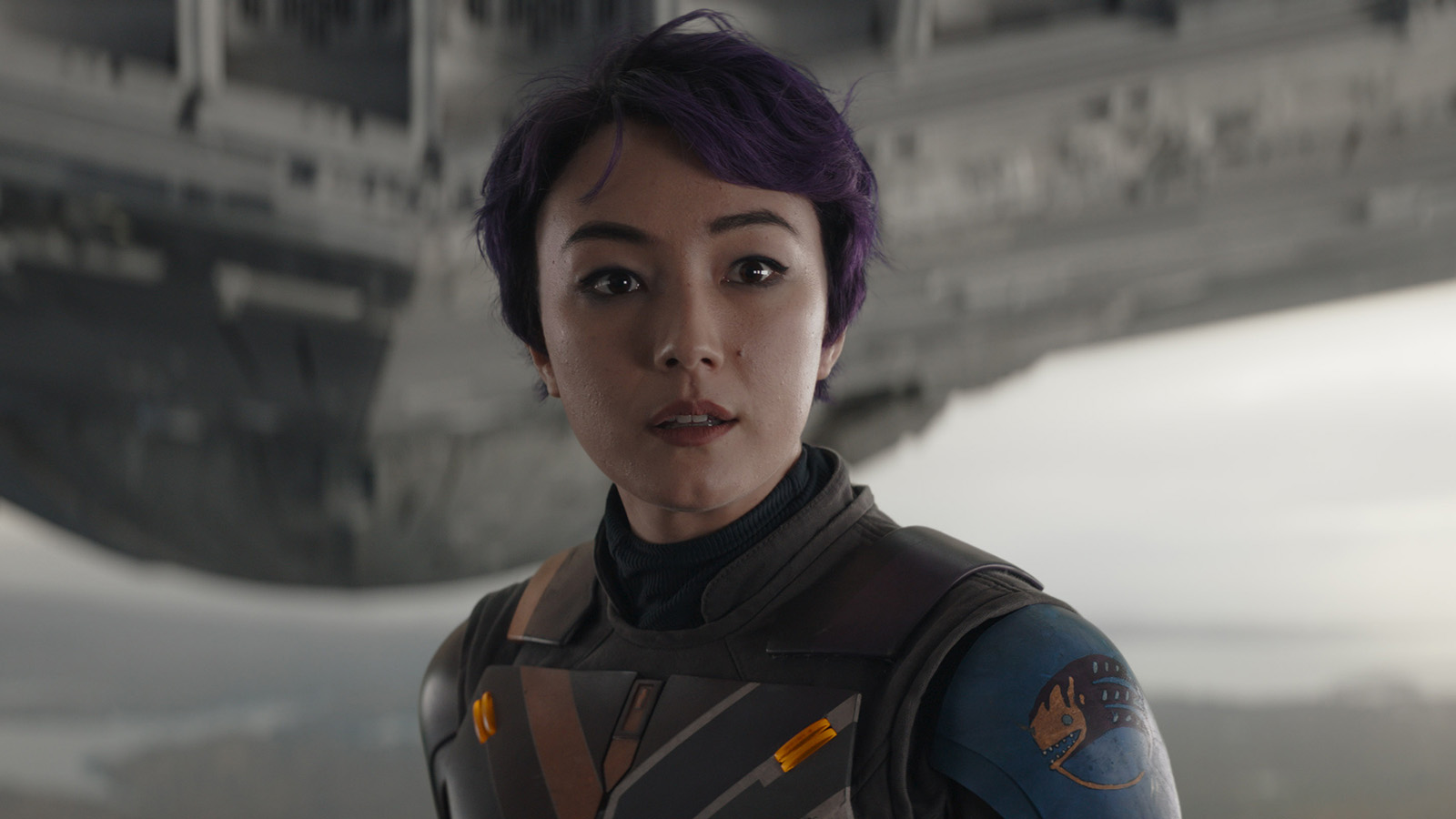
Dana Glauberman: Dave actually had a very clear vision for how he wanted that scene to play. That is essentially shot-for-shot how we cut it in previs. What was the name of the song that we used originally during previs?
Rosanne Tan: Magic Carpet Ride.
Dana Glauberman: Yes, we cut it originally to Magic Carpet Ride and it was so hard to get that out of our minds when we passed it on to Kevin. He was like, “How am I going to score this? That’s such an iconic song” but he ended up collaborating with Ludwig Göransson, Deana Kiner, Kevin and Sean Kiner. They brought on another team to do the vocals for that.
To answer your question, Dave was very clear on how he wanted that scene to play. That was one of the first ones that we finished and it carried on from previs to the final cut.
MF: There are some themes and motifs that are legendary within the Star Wars universe. Do the three of you try to lean into that when you’re temping? Do you use John Williams or something evocative of Star Wars? Or do you specifically stay away from that?
James D. Wilcox: I know what we’re doing with those scenes and the homage to it. In episode three, the space battle is very similar to the trench run in A New Hope. I’ll listen to the older scene to see if it plays into what I’m currently working on, but we want the new show, the new characters, the new action and dialogue and scenes to really come alive on their own.
I tended to stay away from the older film scores. Sometimes I could use something that was less featured, something that was more of just an underscore. But if it was a major moment, I usually tried to stay away from it. I tried it and Dave would say, “Let’s not use that.” That’s what your instincts would suggest, right? It’s like another project, so you may want to try and temp with that. It makes sense. But then sometimes I would cut it in and Dave would go, “I don’t really want to use that. Let’s look around for something else.”
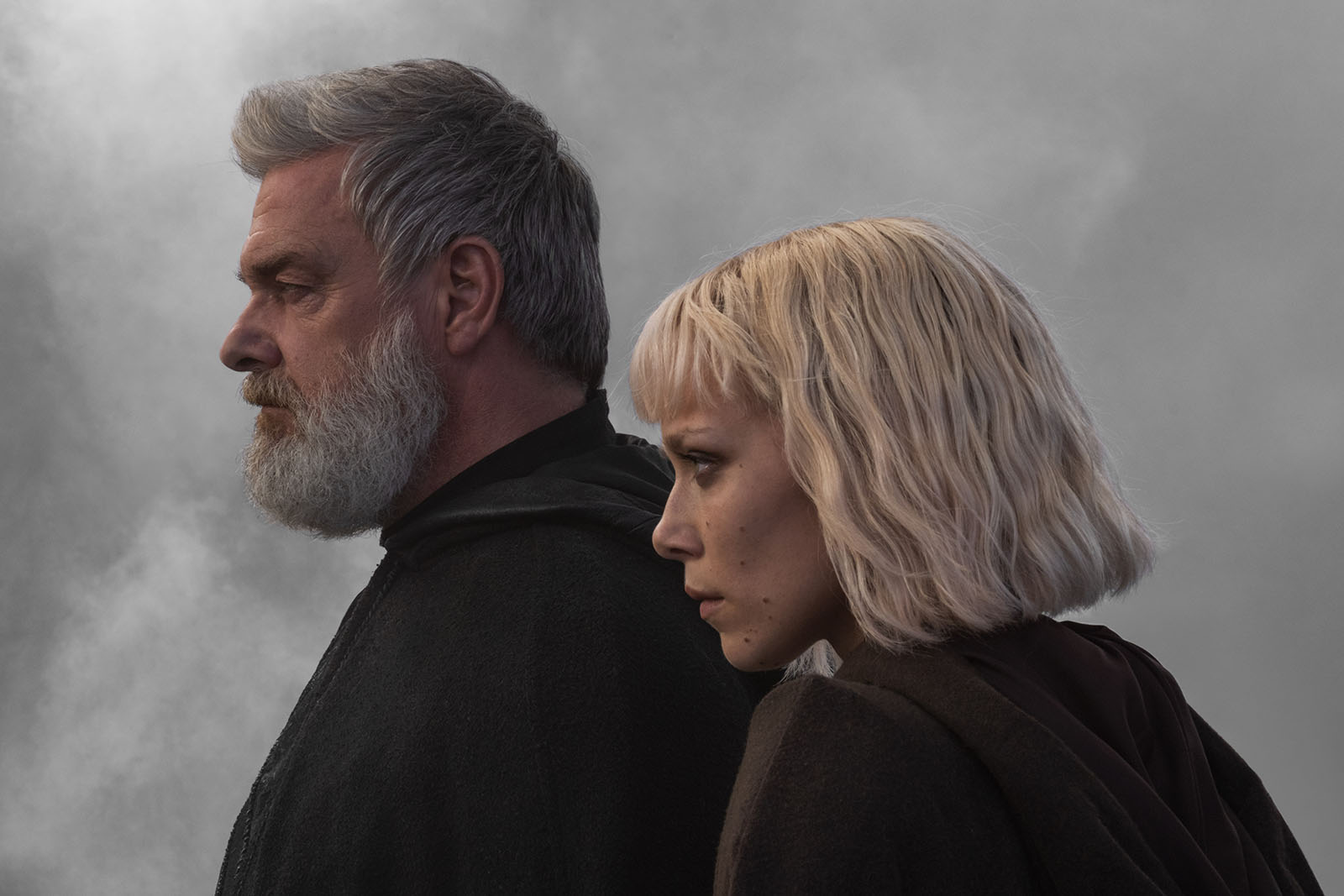
In episode six, “Far, Far Away” I tried to have a homage and it just didn’t feel right. Finally, Dave said, “The scene is working, but let’s try a different piece of temp in there.” I came up with something else that seemed to be the perfect tone. We had a conversation with Kevin Kiner and we nailed down what it was that we needed to do. I think we also had some discussion in Episode eight about the use of the Force theme and when it would be most potent to use it. We came up with a place to use it and it worked well there.
We’re not trying to run away from anything that was pre-established. We want to have fun. Going back to the speeder bike chase, I remember when I started early on, Dave quoted George Lucas and said, “George always said that the Star Wars universe has its own character. But at the end of the day, make it fun. Just make sure it’s also fun.” With that in mind, whenever you cut something you want to go, “Yeah!” Whether it’s heart-pounding or cheerful, you want to make sure that the audience is enjoying the material as well.
George always said that the Star Wars universe has its own character. But at the end of the day, make it fun. Just make sure it’s also fun.
Rosanne Tan: I agree with James on that. I love temping music. I would try different things. In episode five I was temping with Toru Takemitsu’s movie Rising Sun. There are a lot of drums in there, so I was experimenting with that. I didn’t necessarily think of Star Wars. Ultimately, Dave did have a conversation with Kevin Kiner, Deana, and Sean, then they ultimately picked moments to back the John Williams Star Wars music.
It seems like James and I were doing our own temping and Dave would tell us if he didn’t like something. Then we would try something else. But you know I was temping with Johann Johansson or Hans Zimmer or just different things. I was asking myself what felt right for the scene. Every scene is different, every episode is different, so it was just about finding what felt right for that episode.
Dana Glauberman: Sometimes, if Dave didn’t like what we put in, he would have something specific to use. He would suggest a cue from a completely different movie or suggest something that he had been listening to while he was writing that inspired him. We would put that in instead.
James D. Wilcox: By the way, Matt, Dave had a couple of misfires too.
Rosanne Tan: It’s not possible!
James D. Wilcox: Look, it’s the creative process, right? You try something and that brings you closer to what not to do. Then you start dialing it in from there. That’s just part of his openness. Have an idea, have a plan, but be flexible.
It’s the creative process, right? You try something and that brings you closer to what not to do.
Dana Glauberman: And there’s no bad idea.
MF: There is no try, James, there is only do. You know, Star Wars can get crazy in a good way with all the intercutting. You can have up to three scenes playing out at the same time, like in Episode seven, Rosie, the one you did. You had Ezra and Sabine fighting off Shin and the Bandits. At the same time, Ahsoka is dealing with Baylan. Then you have Morgan Elsbeth and Thrawn (Diana Lee Inosanto and Lars Mikkelsen) watching the battle from the ship.
Rosanne Tan: And Huyang flying the T-6 shuttle.

MF: Inevitably, one of those scenes ends and its characters transition into one of the other scenes. In the finale, you’ve got Ahsoka dueling with Morgan and Sabine, and Ezra is trying to stop Thrawn from escaping. It’s a frenetic pace and it’s so much to manage as an editor. What is your approach to that? Do you cut each of those sub-scenes as its own sequence and then cut the sequences together? Or do you take a linear approach and build from beginning to end?
Rosanne Tan: I’ll answer for episode two. We had a lot of big intercuts when Ahsoka was fighting Merrok, and then also coming back to Hera and Chopper. Episode five is a little different. Five is more of a dream and in seven we have a lot of back and forth.
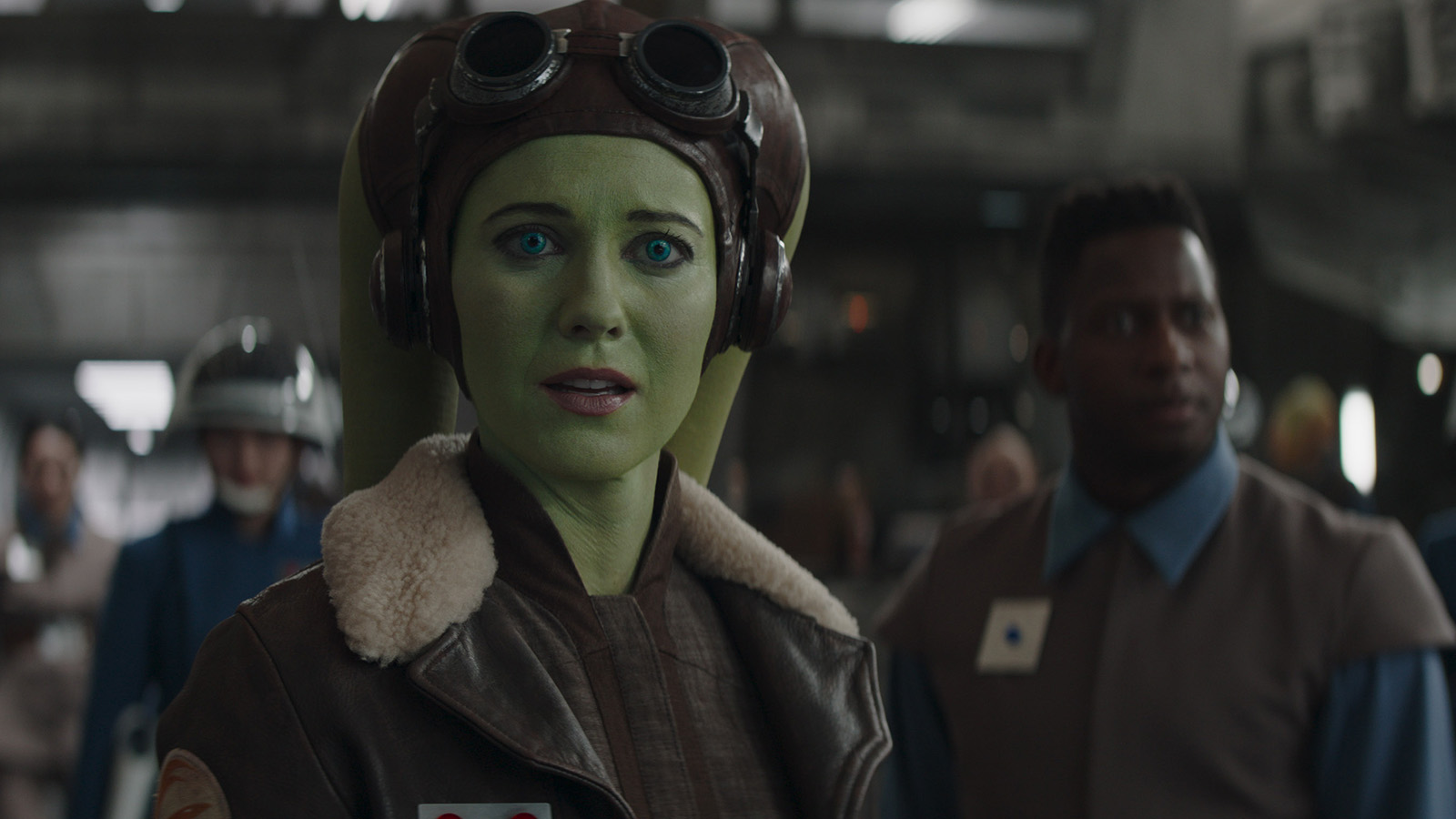
When Ezra and Sabine are fighting, before we cut back to Baylan, I cut that all in one piece. Later on, you can see where things might be okay and think, “That makes a good transition.” When Dave saw something he would say, “Oh no, this is a better transition” and then we would do that. When I would present my cut for the first time, I would try to say, “Maybe this is a spot to hit.” You also want to follow the script. Sometimes you want to do the script and then, if I had an alt, I would say, “What about this idea?” That’s how I would approach it.
James D. Wilcox: Same for me. The only difference is, when the dailies are coming in, you have to cut what you’ve received. After you’ve gotten enough of it and you’ve got your show, then you can get creative on where to make those inner cuts work best.
Dana Glauberman: I always cut to the script. As you know, scenes are shot in a different order than they’re scripted. As James said, you cut what is given to you first. I always keep to the script and then, generally speaking, I’ll throw out some ideas. Once the director, producers, and the showrunner start working with us, we collaborate to get to where those inner cuts are.
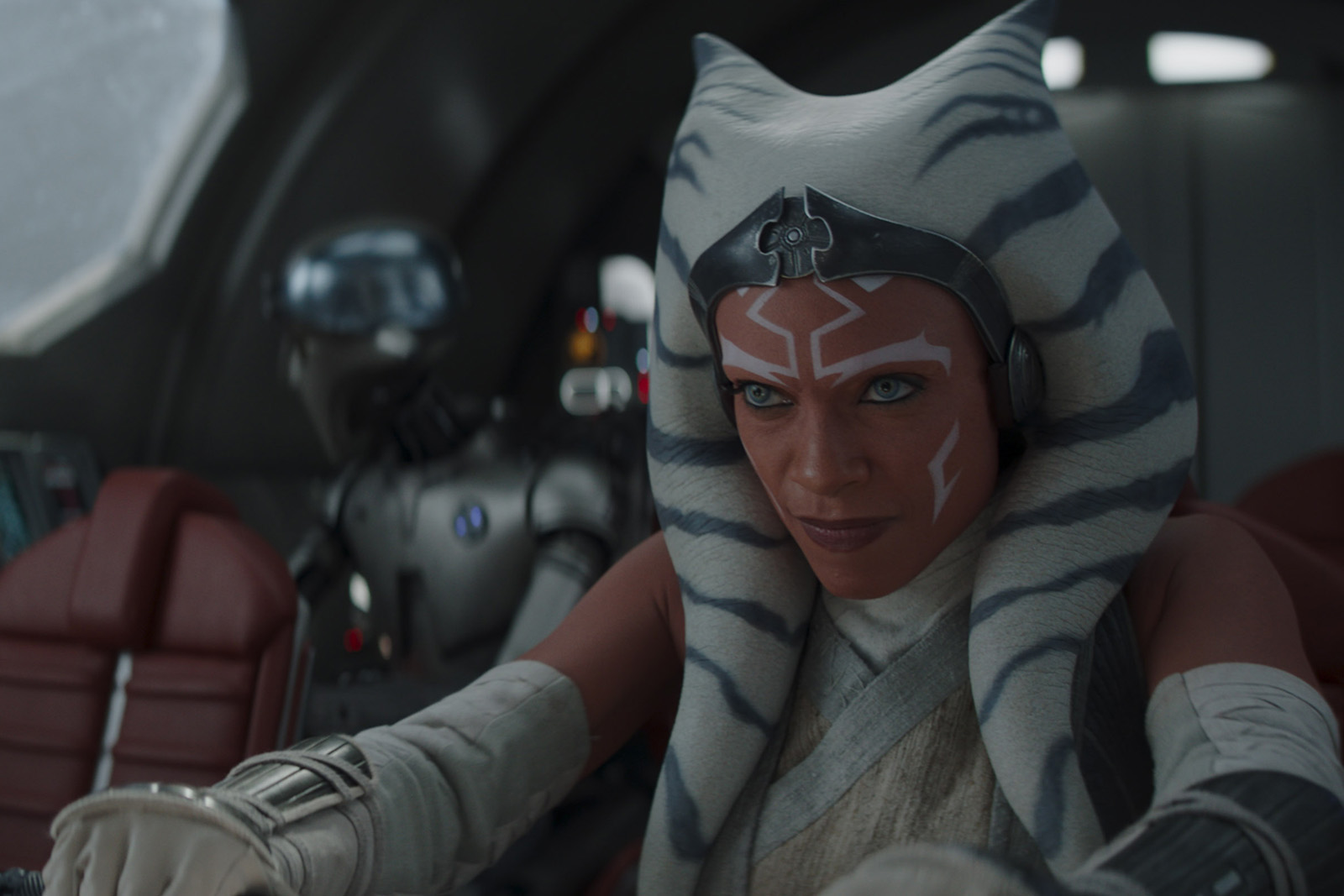
MF: I think we have a theme here. You take what you get and you give it your best. I am hardwired to look for Easter eggs when I’m watching a Star Wars film or TV series. When I went back and watched Ahoska for a second time, an Easter egg popped out that I never expected to see. What the hell were The Shawshank Redemption Easter eggs?
Rosanne Tan: Oh, in episode one?
MF: In episode one you have Clancy Brown, who played the sadistic guard, Captain Hadley, in Shawshank. He played Governor Azadi in Ahsoka. I caught that the first time because Clancy Brown is pretty easy to pick up. But if you go back and watch episode one again, there’s another Shawshank Redemption character, Mark Rolston, who played the equally sadistic inmate Bogs. He was Captain Hayle. Of all the Easter eggs I would expect to find in a Star Wars project, The Shawshank Redemption might have to be the absolute last.
Dana Glauberman: That’s hilarious.
MF: Did you guys talk about that at all? Did Dave say anything about that?
Dana Glauberman: No.
Rosanne Tan: I brought up my only Easter egg earlier. I realized, “Hey, that was Kevin Kiner and James Wilcox. That was my only thing. That was separate from the actual Star Wars universe.
Dana Glauberman: We never talked about it.
MF: That’s amazing. Working Shawshank into a Star Wars show is quite a feat. If you talk to Dave, see if you can work in The Green Mile next season. That would be awesome.
Dana Glauberman: Done.


